Sharon Public Library

Introduction
Overview
My contributions
Timeline
Role
Problem
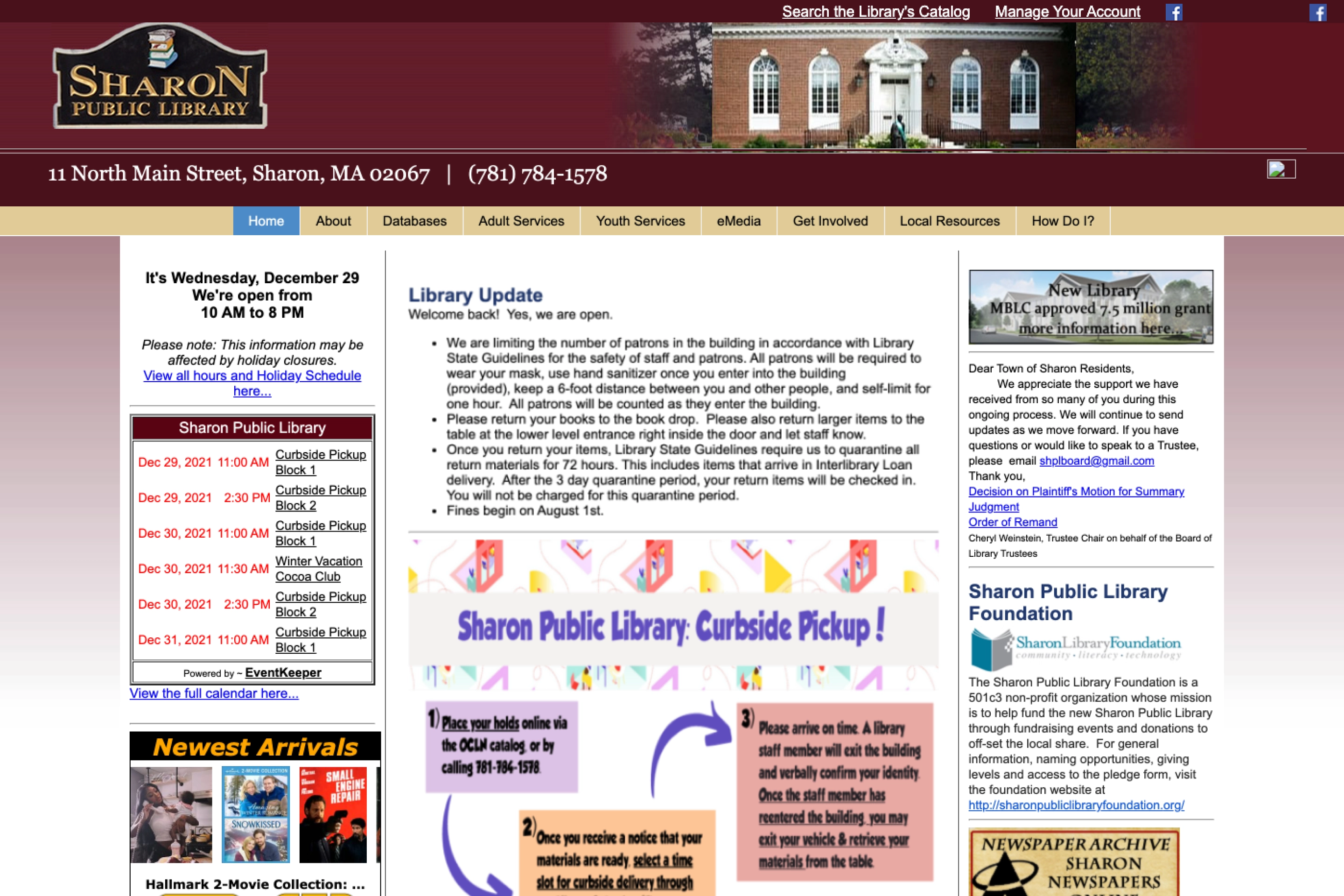
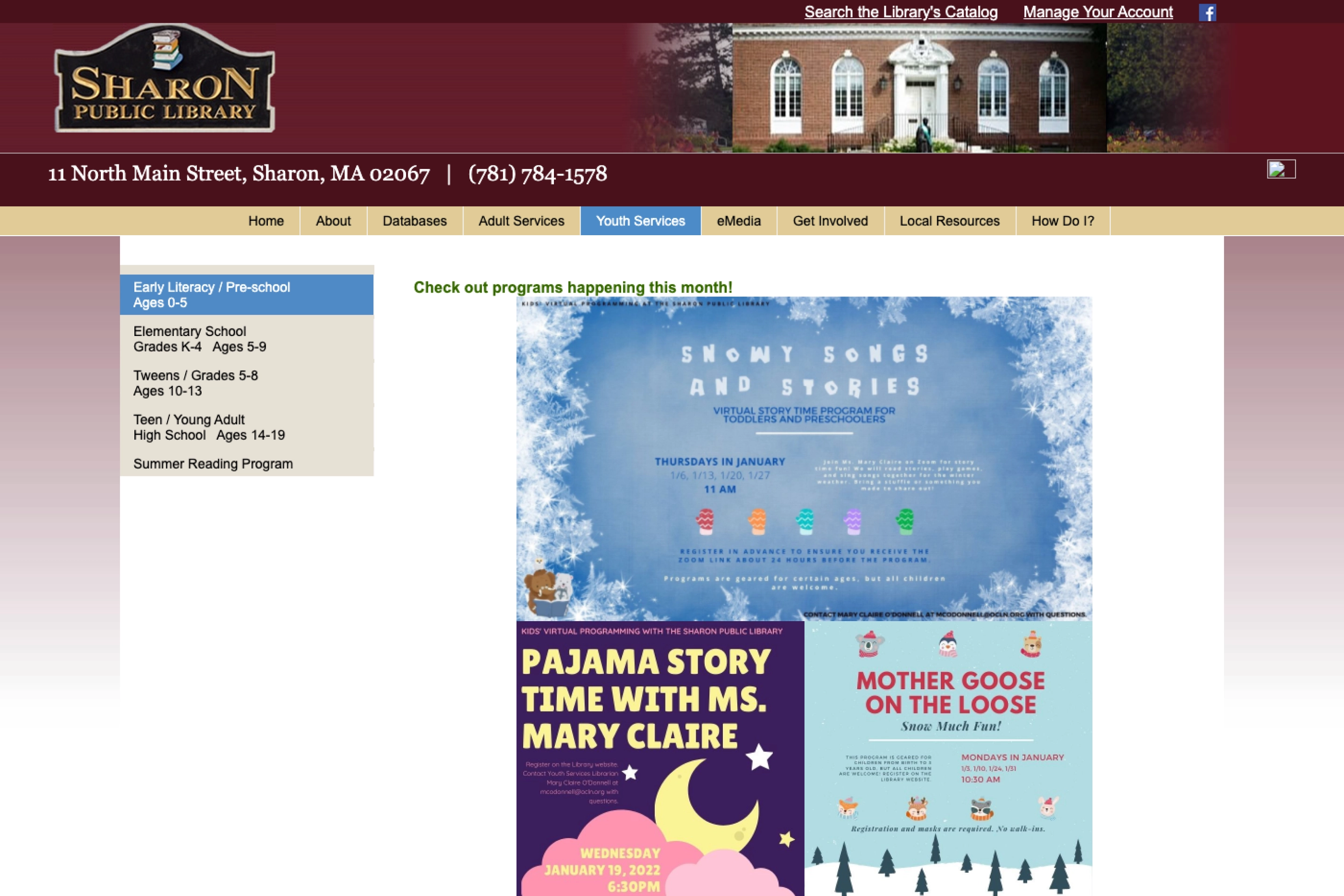
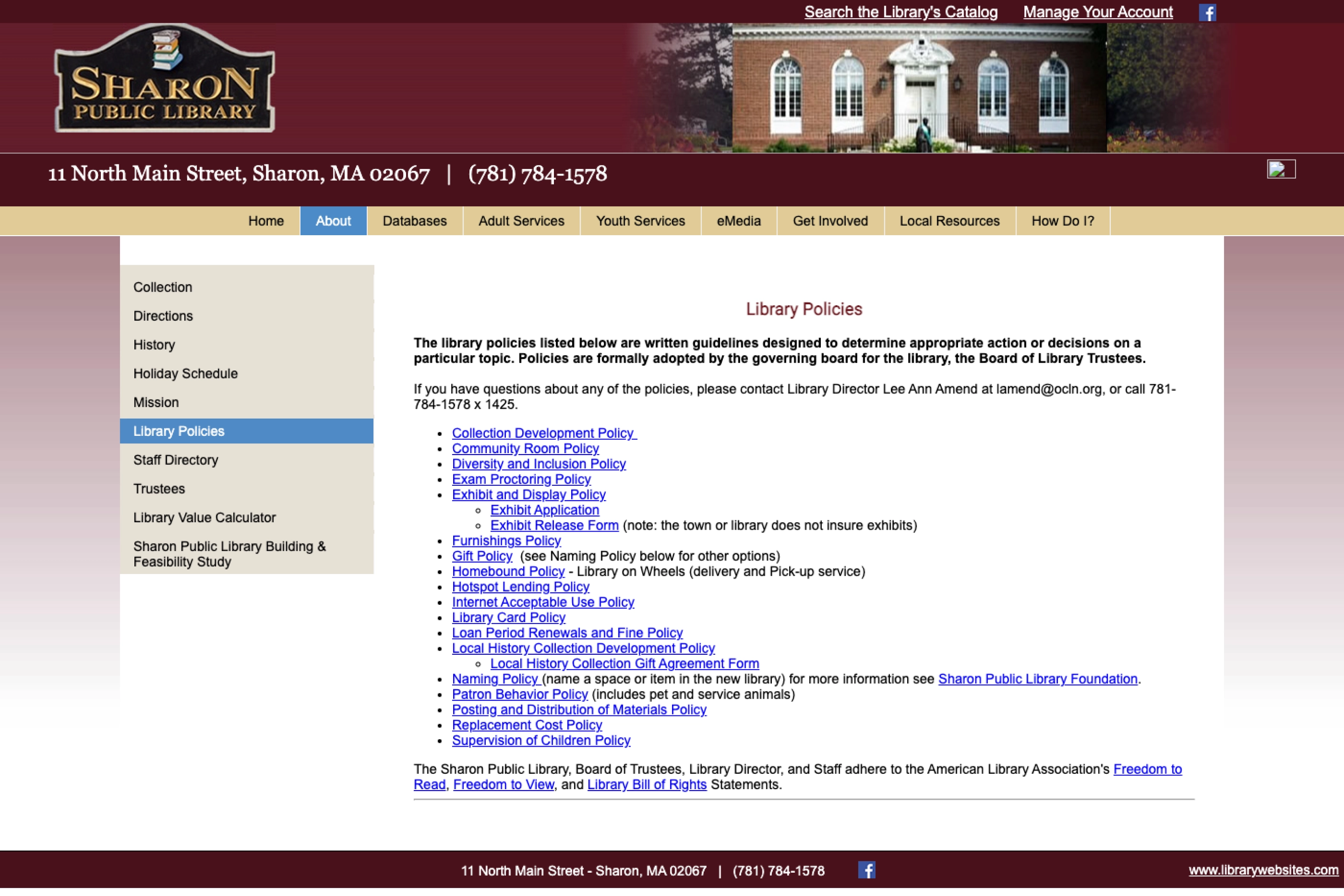
Goals
Discovery
How might we enhance navigation on our existing site?
Analysis
What are our opportunities?
Ideation
What are our opportunities?
Constraints
Fictional project with no research budget.
Research
Methods
- Content analysis — to help define an inventory of current content to compare to tasks our patrons find challenging to complete
- User personas — to humanize library patrons and their goals, activities, and frustrations with our e-commerce web experience
- Usability tree test – to measure the effectiveness of a recommended sitemap
- Usability click test – to validate the usability of wireframes
User insights
Findings
- There is an age correlation with comfort with technology literacy for older than younger generations regarding access to materials and services, promoted services, materials, physical hardware, and electronic downloads.
- Computer hardware and WI-FI are two common denominators for some individuals to visit physical libraries and interact with digital products and services.
- Databases are maintained manually and do not always align to digital databases, creating frictions for patrons in person.
- HOOPLA is a popular topic in libraries since this service provides access to download music.
- Covid-19 significantly impacted the availability of physical services, pushing an increase in digital resources and services.
Recommendations
- Monitor Content Usage – Archive content not being visited or requested if older than ~5 years or information is no longer valid. It may inhibit or interfere with more relevant search topics for patrons.
- Text-HTML Pages instead of PDF Pages – PDF Pages are more challenging to find with search engines as they do not always capture Optimal Character Recognition (OCR) Text. Consider reducing the number of pages that can be a Text-HTML page easier to maintain within a Content Management System (CSM).
- Navigation – Consolidate and simplify pages by exposing more information with new organization labels to support finding content.
- Signed In Content – Access and extend book checkouts, manage space reservations, and view downloaded content history.
- Trending Content – Display relevant content based on recent search catalogs, checkouts, and Frequently Asked Questions with library staff.
- From Home Content – Group content for library patrons wanting to streamline finding content from the comfort of their own homes.
User personas
Becca Informant

"I like to stay informed and be able to anticipate where I can find answers to all types of questions."
About
Becca has worked twelve years as a branch clerk in nine different libraries. Becca wears more than one hat and shares her knowledge across multiple departments. You’ll often find Becca trying to find new ways to adapt to change by ensuring they are prepared to answer or research growing patron requests.
Goals
- To make it easier for patrons to navigate physical and digital channels within the library
- To remain relevant with change of interests across generations
- To promote diversity and inclusion
Activities
- Relies heavily on databases to find information
- Physical and Digital
- Support
- Attends various workshops to learn more about diversity and inclusion
Frustrations
- Physical materials not being found in locations digital databases suggest Covid-19 Access Restrictions
- Shared licensing on volume codes for electronic services
Laura Adapter

"I like portability and enjoying audio books, movies and music on my personal devices on the go."
About
Laura is a junior in high school who recently learned she could save her allowance by leveraging electronic downloads from her local library. Laura enjoys listening to audiobooks and relies on her electronic library card membership to find new content to download online.
Goals
- To research resources as she prepares to start applying for universities
- To be able to download electronic content into her handheld devices
Activities
- Sort and browse content in directories
- Download content on multiple devices
- Leverage library resources for research with high school classes
Frustrations
- Browsing and discovering materials and learning, she can’t download
- Electronic downloads are not available, forcing her to go into a library to check out books physically
Adam Traditionalist
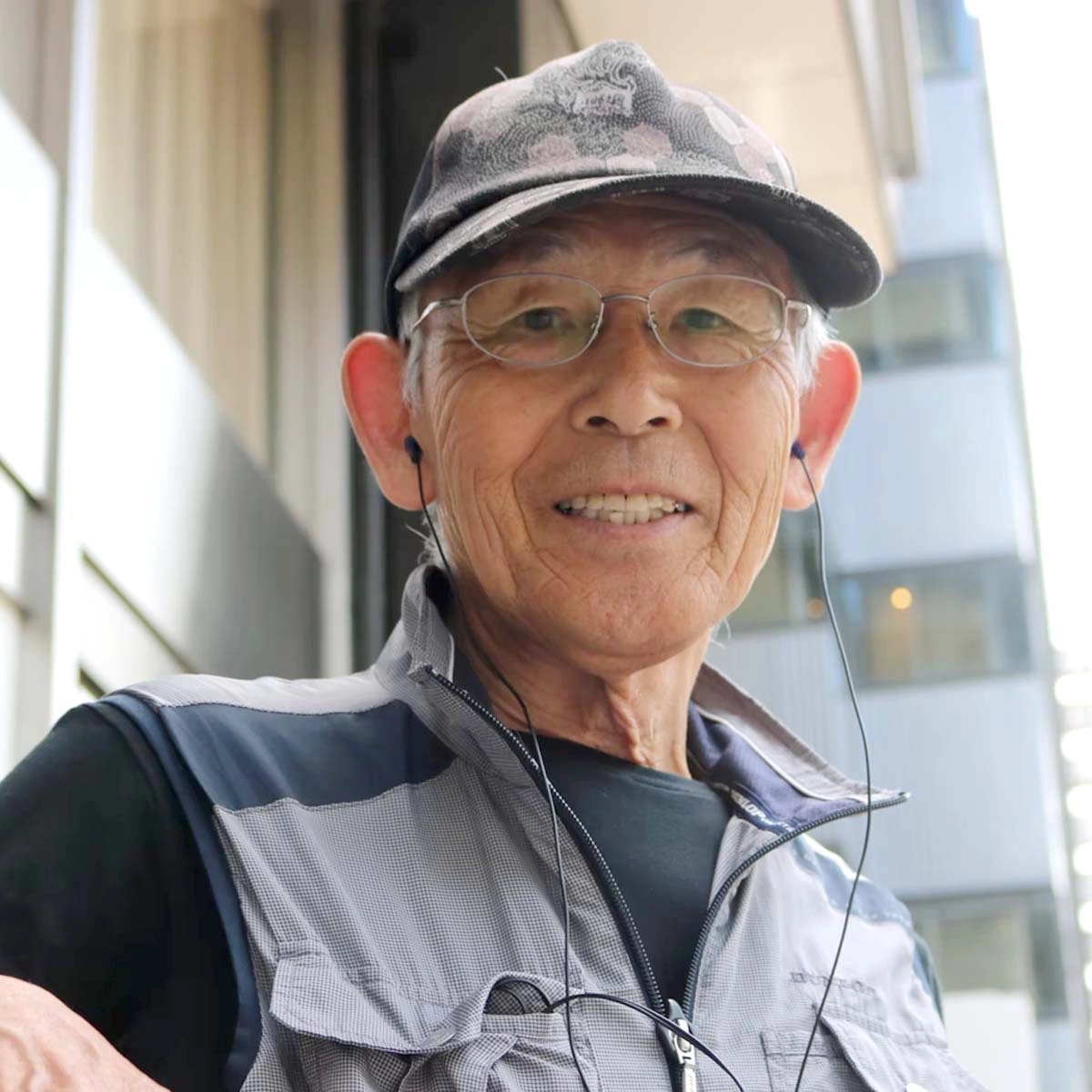
"I enjoy taking my grandchildren to the library and finding a program or book to keep them entertained."
About
Goals
- To find events that can entertain his grandchildren
- To find picture books to read for his grandchildren
- To stay up to date with the local and national news
Activities
- Relies heavily on printed posters, flyers, and brochure at library desk
- Likes walking to newspaper wall and picking up latest papers
- Use computers to find favorite books to check out
Frustrations
- Physical materials not being found in locations digital databases suggest Covid-19 access restrictions
- Shared licensing on volume codes for electronic services
Tree Test Results
- 3 out of 5 participants successfully located Request Library Card
- Only 1 out of 5 participants located Hours of Operation
- 4 out of 5 participants successfully located library resources
- 4 out of 5 participants successfully located book reservations
- 4 out of 5 participants navigated to book reservations
- 5 out of 5 participants prefer Newsletter as primary source for updates
- 4 out of 5 participants successfully located Test Prep
- 5 out of 5 participants successfully located Audiobooks
Initial proposed sitemap
Revised sitemap
Solution
Modular tiles for dynamic content
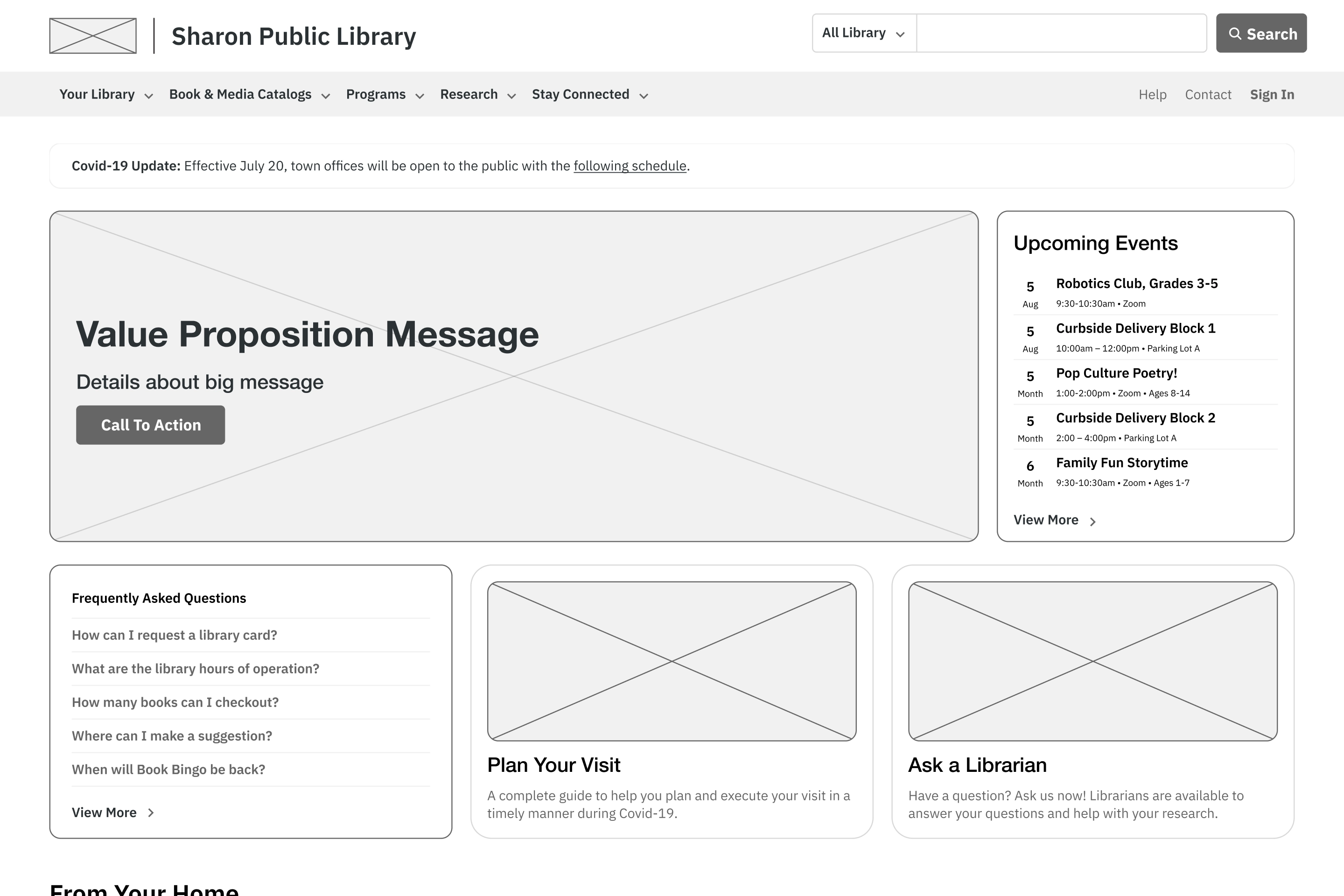
Breadcrumbs and secondary navigation systems
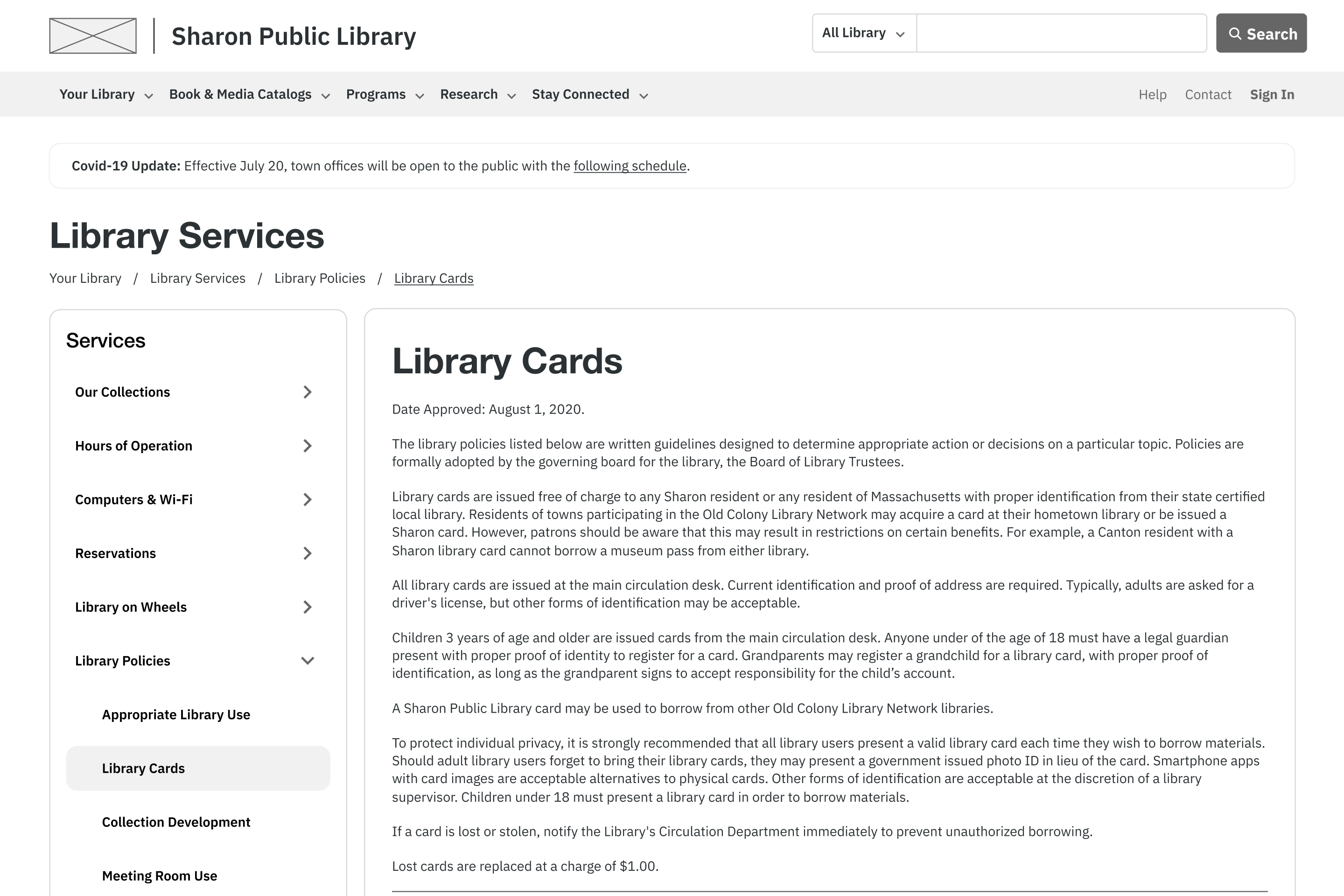

Key screens
Homepage
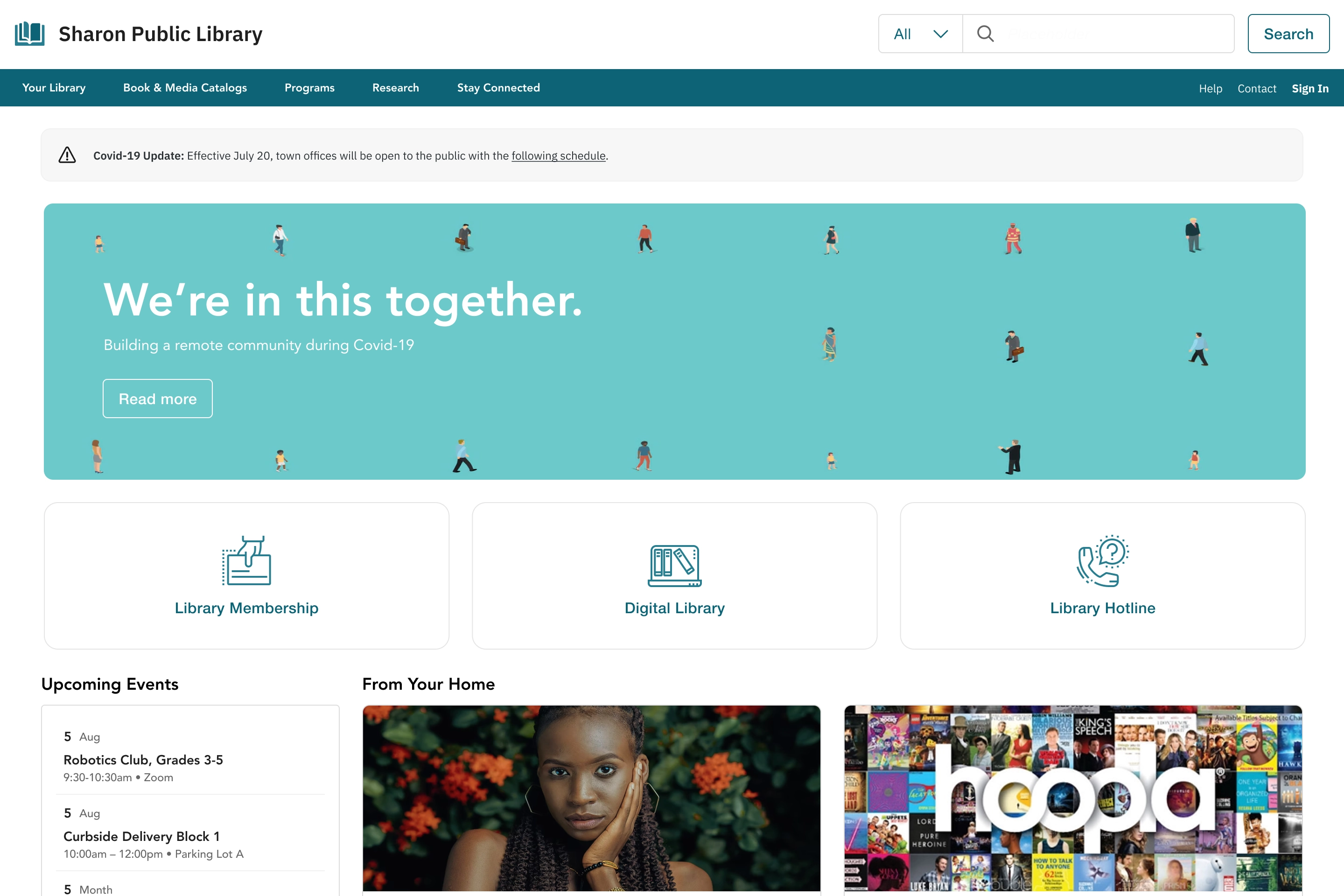
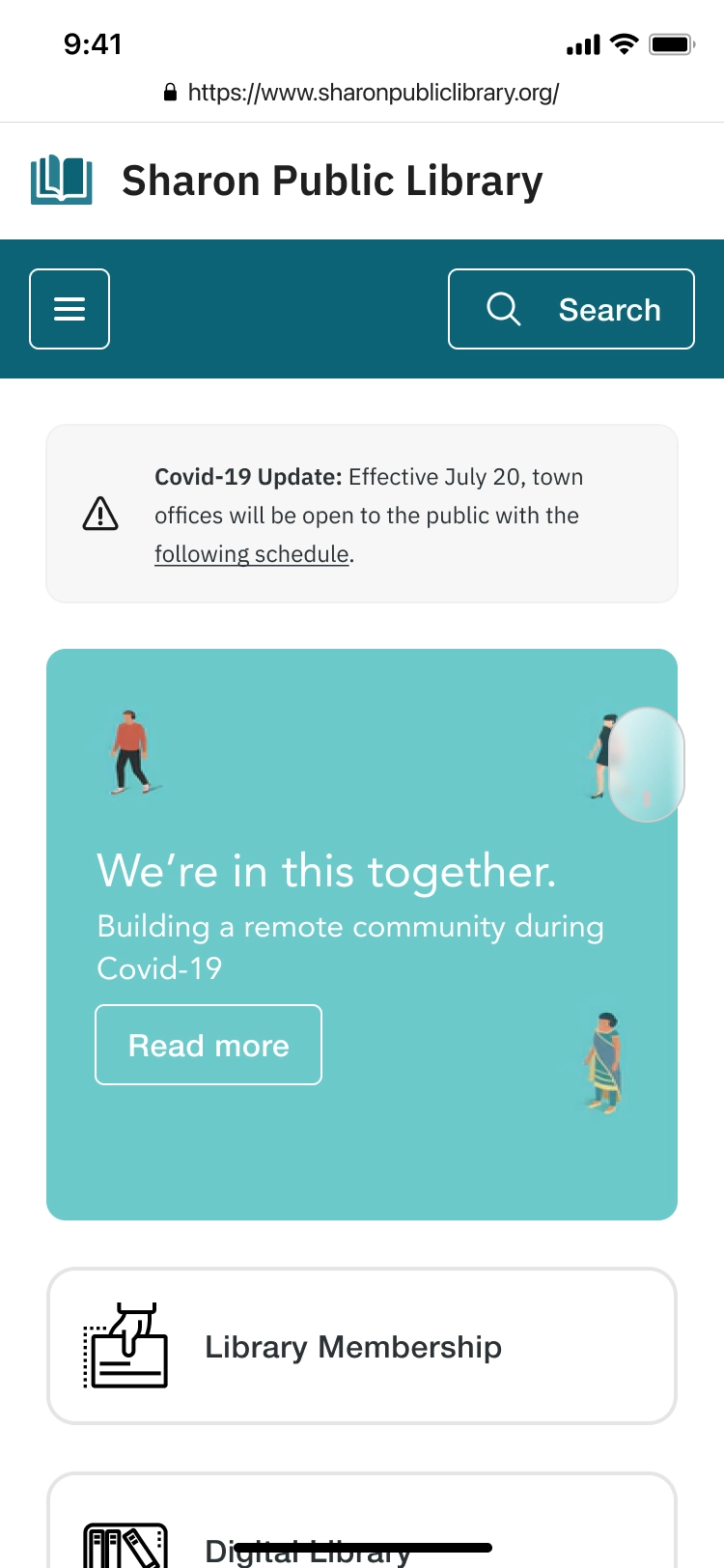
Frequently asked questions
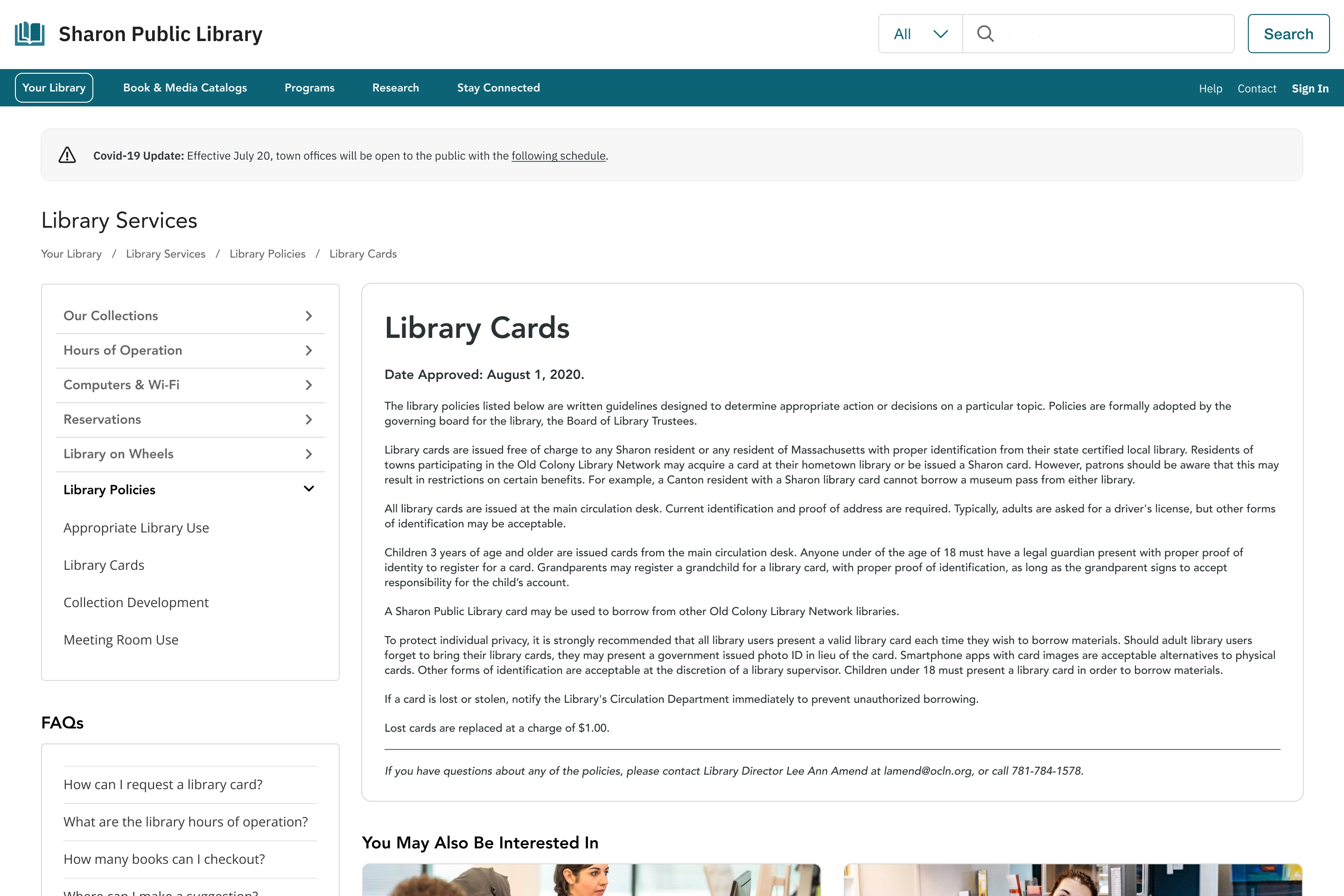
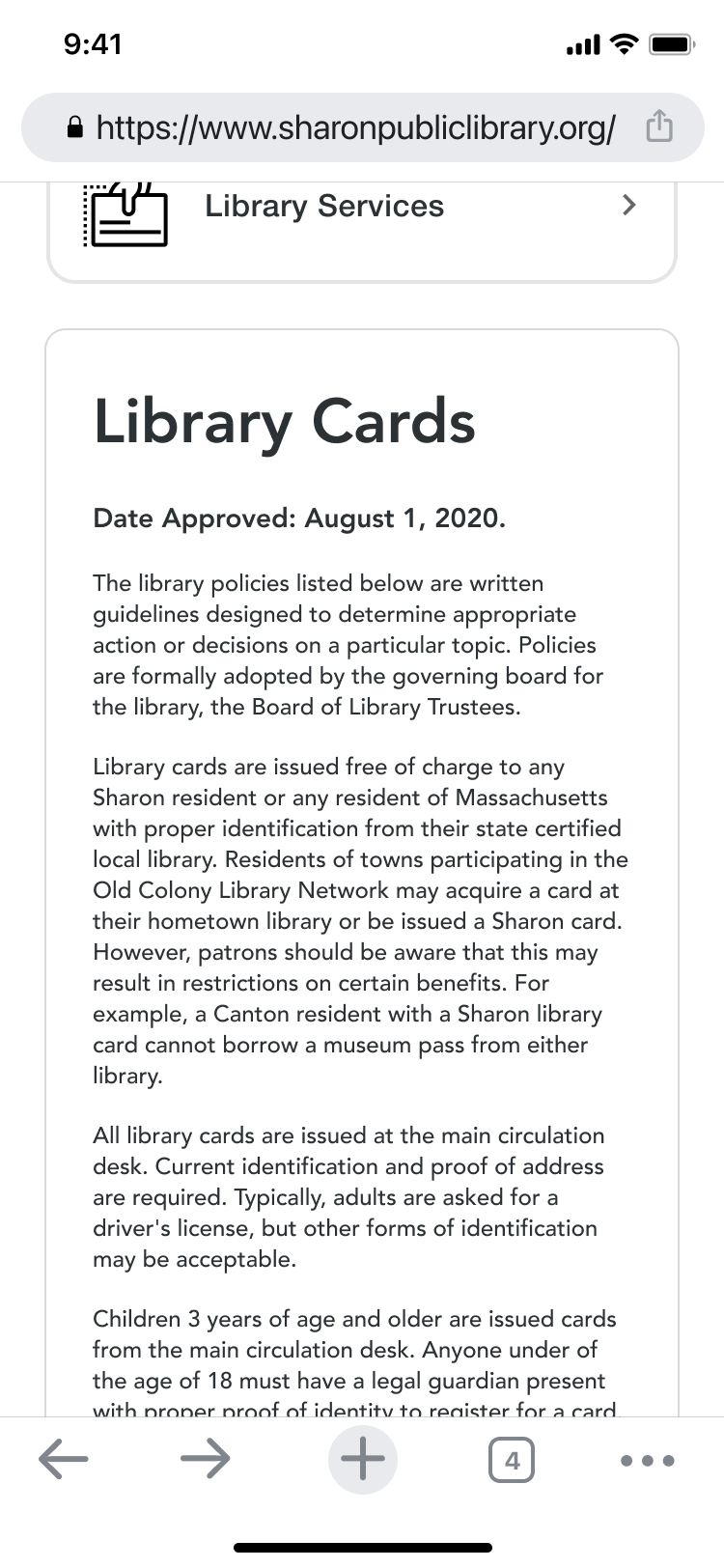
New information architecture

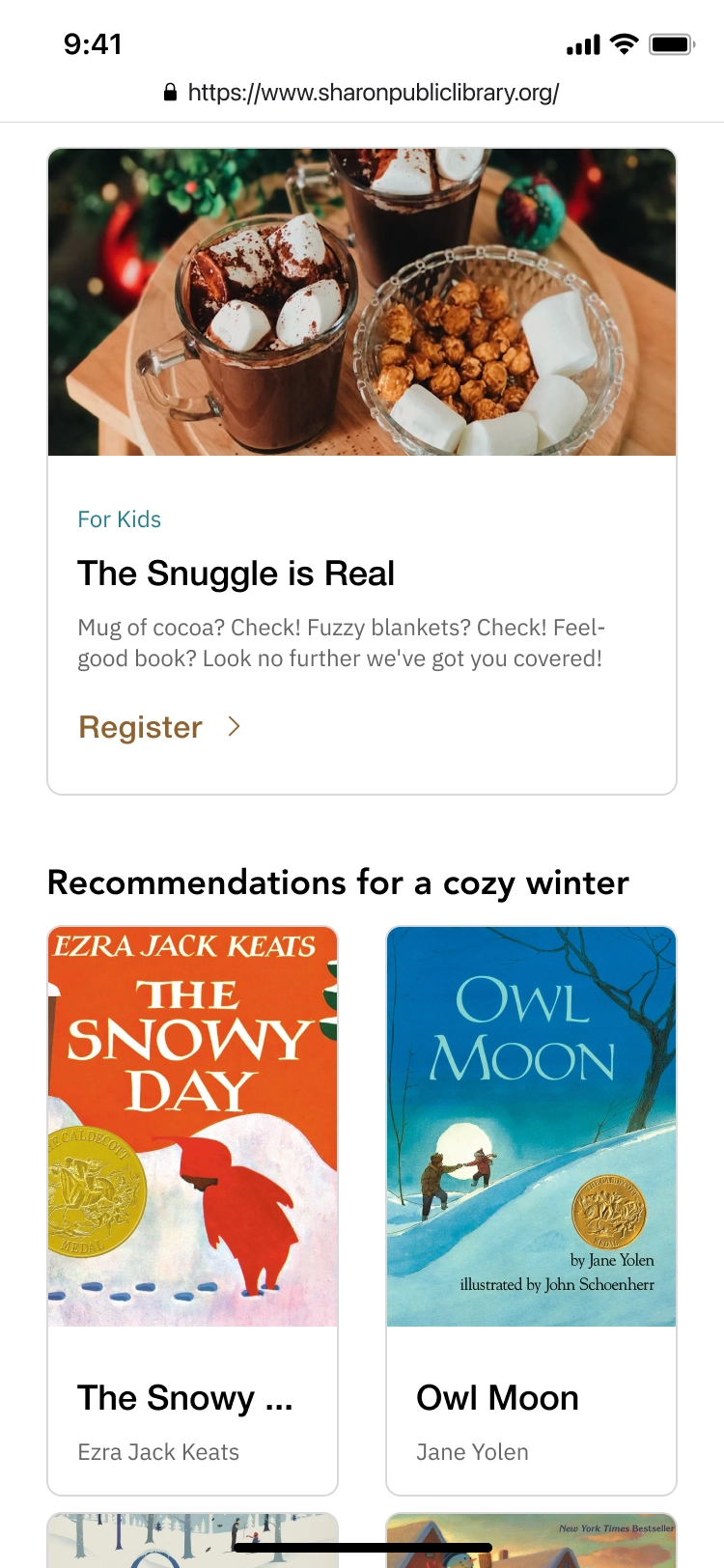
Reflection
Integrate as much user and stakeholder feedback as possible into your iterative design process to ensure you’re aligning with business goals as well as rationalizing with user needs.
Next steps
- Design System — Standardize visual language design across experiences and save product development funds and time
- Global Search — Find content across multiple catalogs and refine the search based on year of publication, location, physical material, or electronic download
- Notifications — Reminders on relevant events, reservations, or new content suggestions based on previous interactions
Takeaways
- Focus more on user-centricity, research, analysis, and design ideation before committing to visual design without user input
- Remain flexible and understand that being out of scope does not necessarily mean a feature and enhancement may never happen